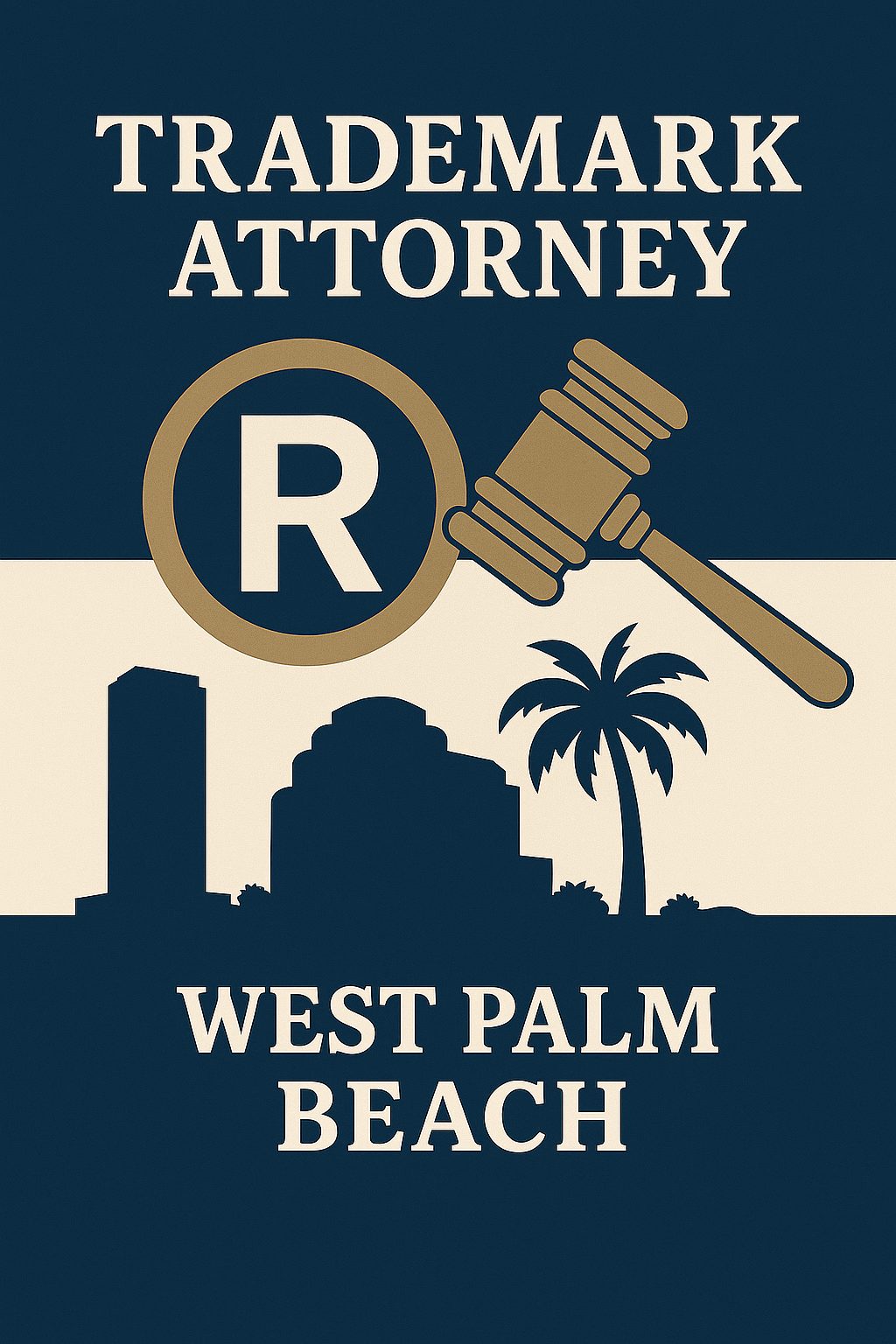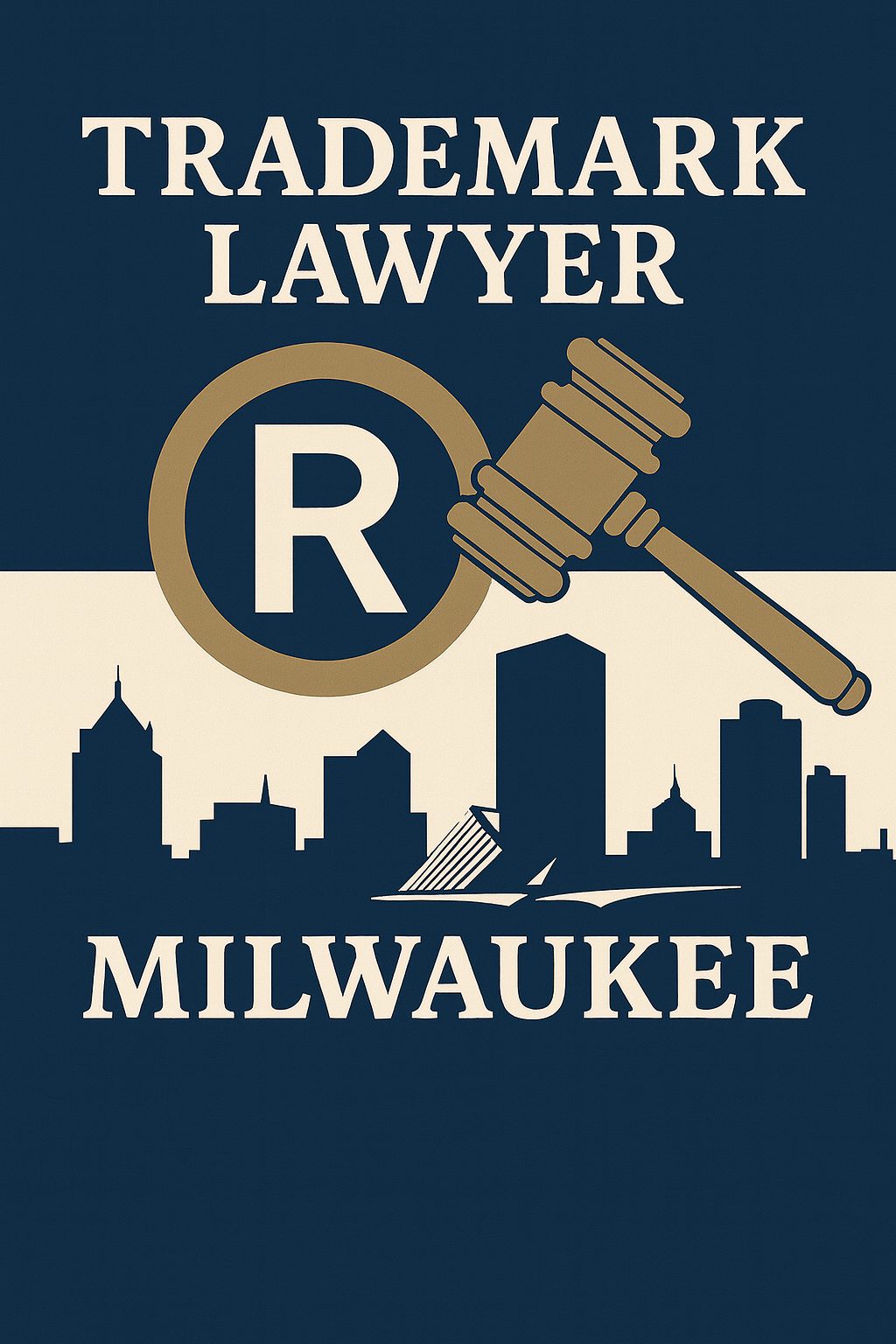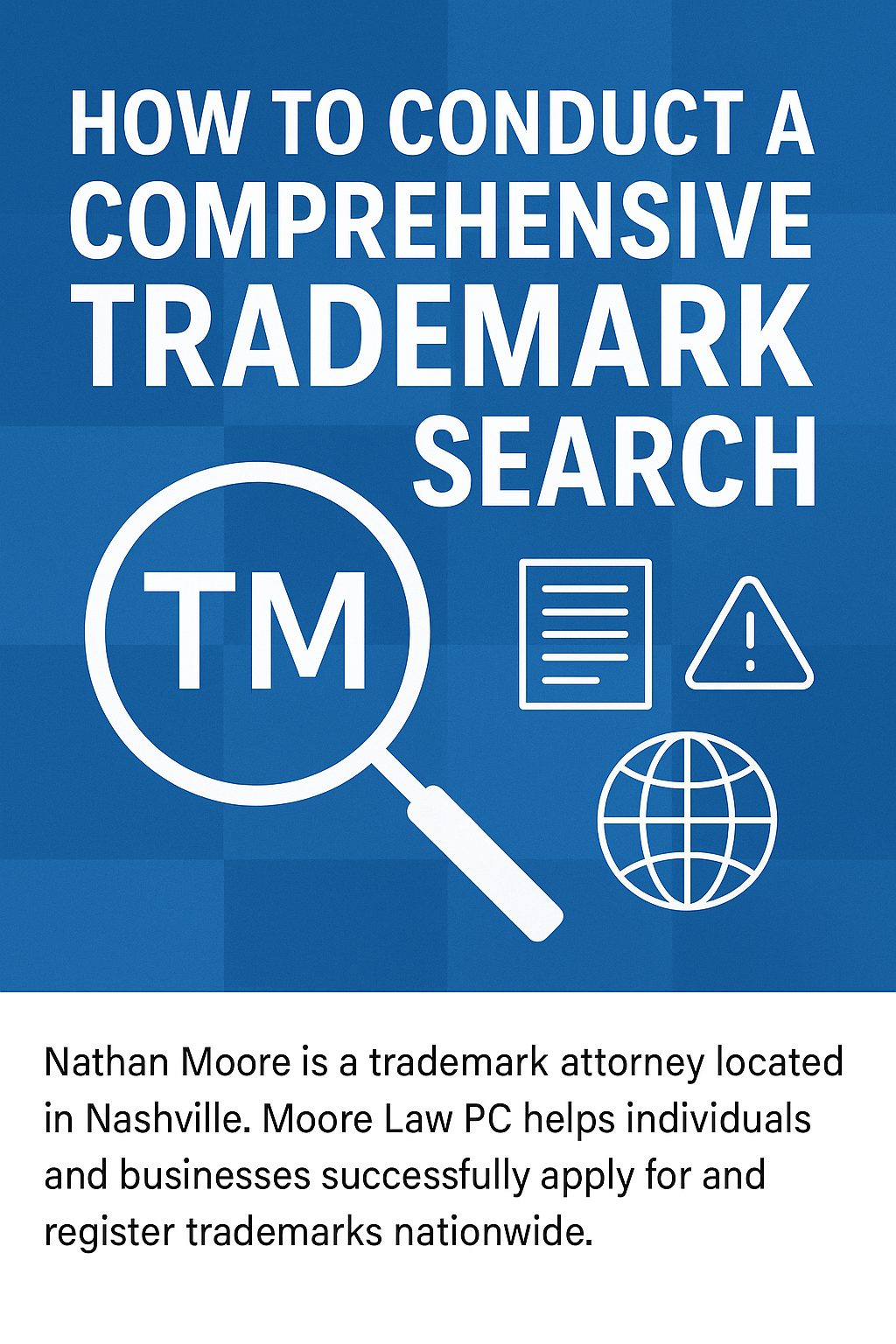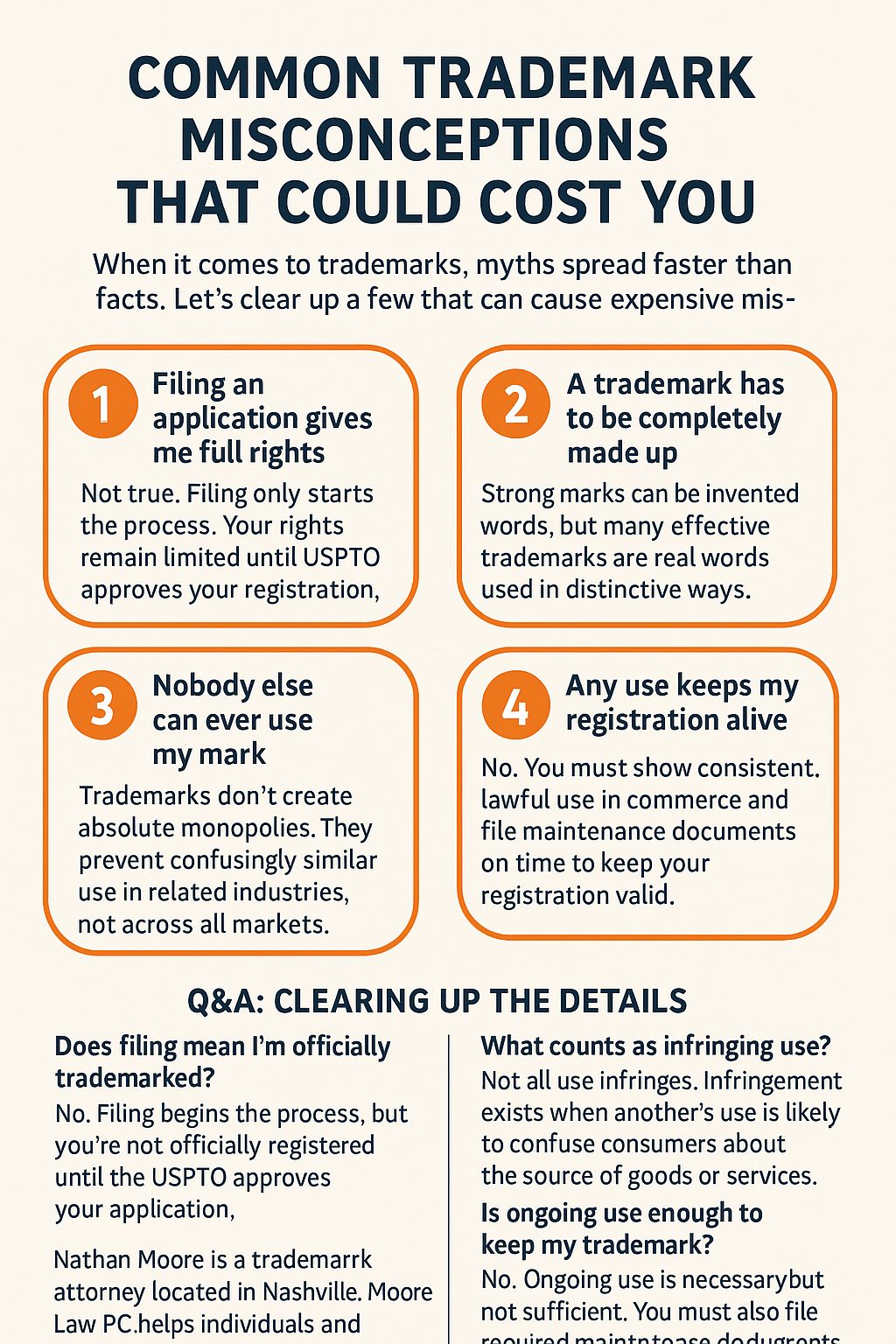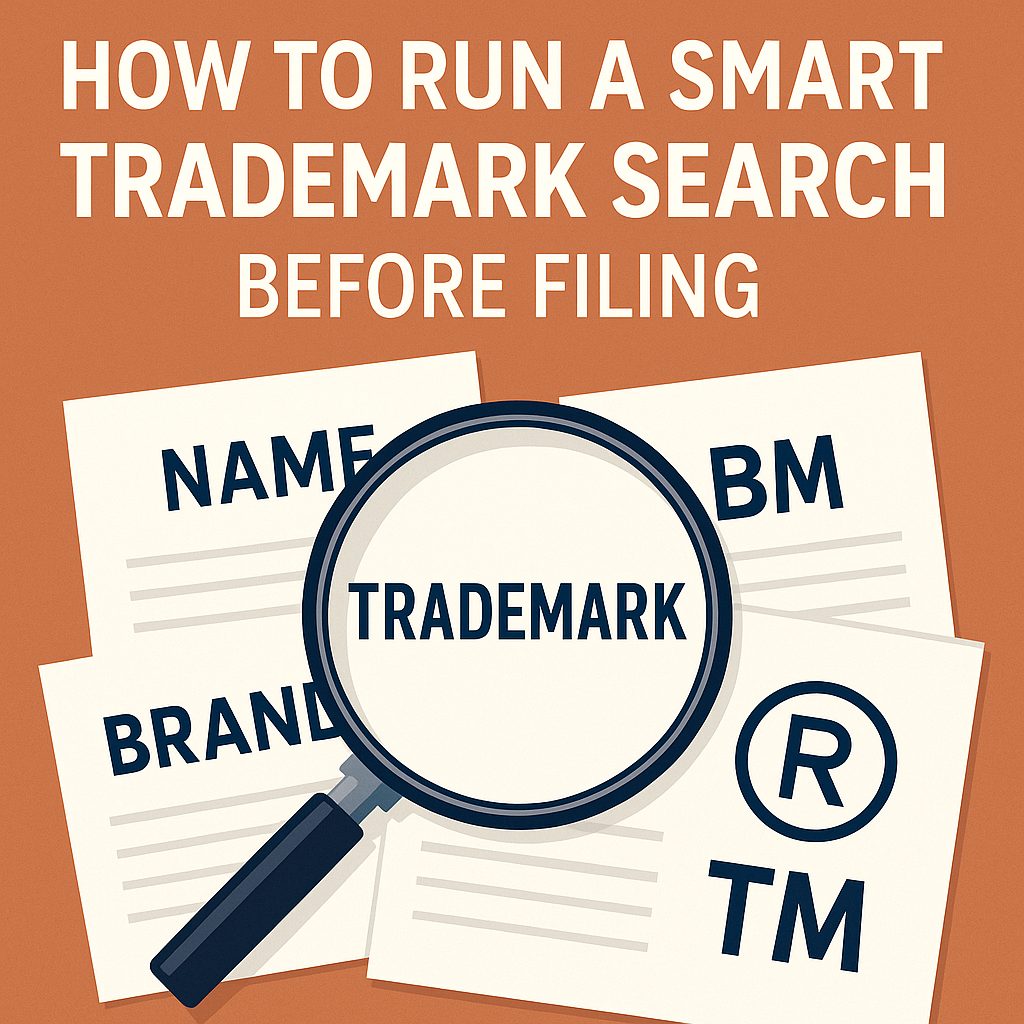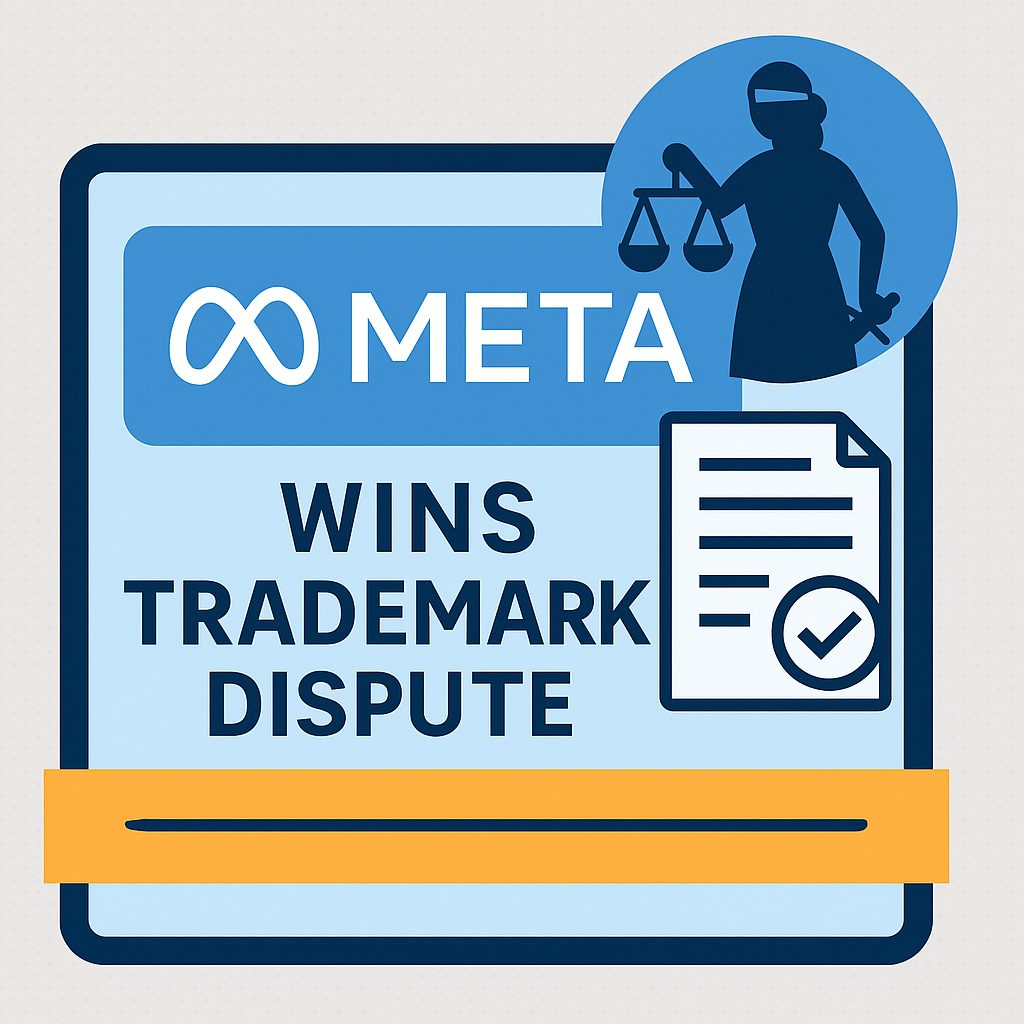Your cart is currently empty!
Category: Trademarks and Copyrights
Word Marks, Design Marks & Composite Trademarks: What’s the Difference?
If you’re building a brand and want to protect it legally, one of your first steps is registering a trademark. But what kind should you register? Word mark, design mark, or a combination of both? This article explains the differences so you can make the right choice for your business. What Is a Word Mark?…
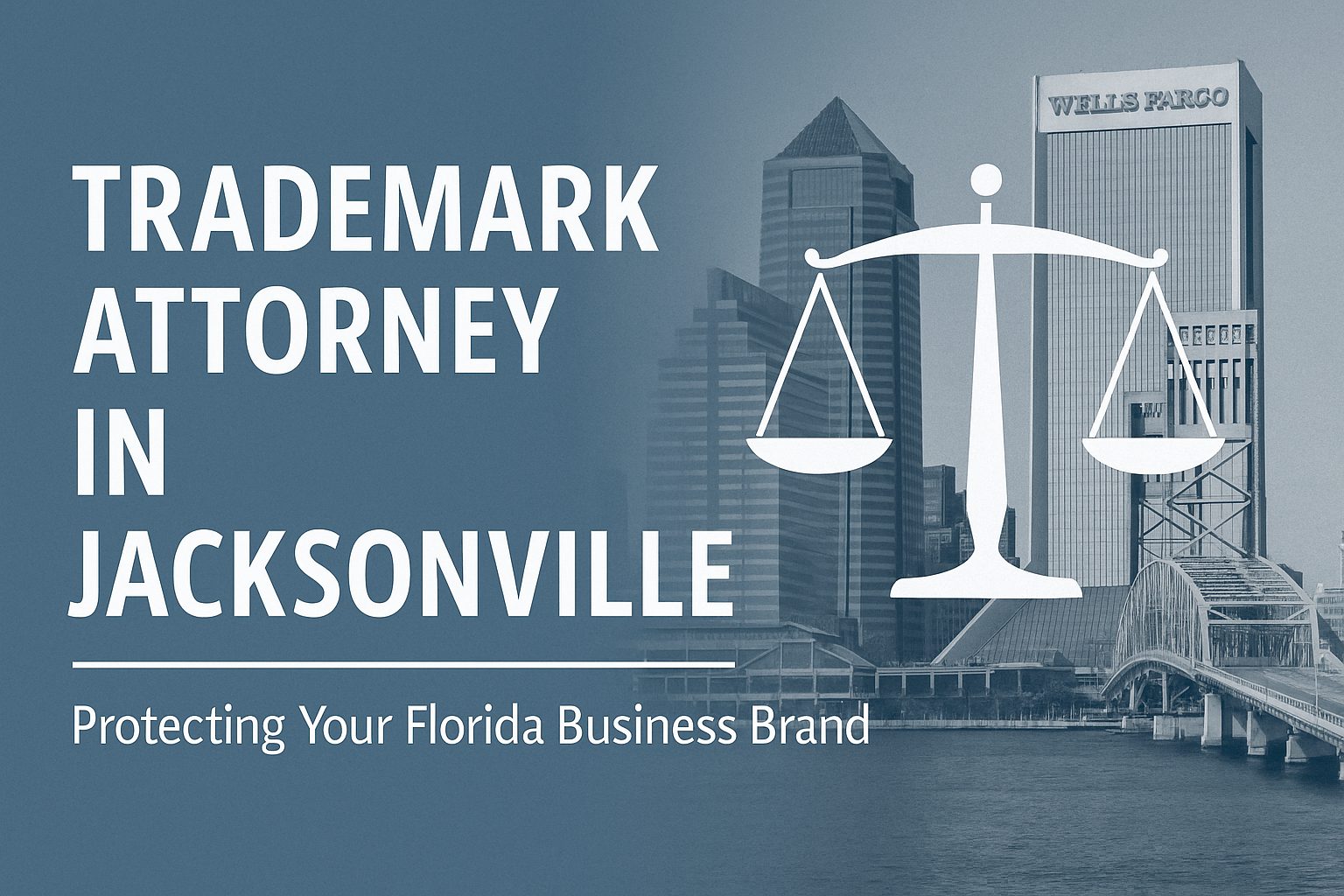
Trademark Attorney in Jacksonville: Protecting Your Florida Business Brand
Trademark Attorney in Jacksonville: Protecting Your Florida Business Brand Last updated: October 2025 Your brand name, logo, and slogan are more than creative assets—they’re the reputation you’ve built. Without protection, another business might use something confusingly similar and dilute your goodwill. That’s why many owners choose a trademark attorney in Jacksonville to help secure their…

Hire a West Palm Beach trademark attorney to protect your brand
Trademark Attorney in West Palm Beach: Protecting Your Florida Business Brand Last updated: October 2025 Your brand name, logo, and slogan are more than creative assets—they represent your reputation. Without proper protection, another business could use something similar and confuse your customers. That’s why many business owners turn to a trademark attorney in West Palm…

Trademark Attorney in Milwaukee: What Business Owners Need to Know
When you’re building a business, your name and logo are often your most valuable assets. But without legal protection, another company could use something confusingly similar — and you might have little recourse. That’s where a trademark attorney in Milwaukee comes in.This guide explains what trademark attorneys do, when you should hire one, and how…

How to Conduct a Comprehensive Trademark Search
Before filing a trademark application, the most important step you can take is running a proper clearance search. Too often, businesses file without doing their homework and face delays, refusals, or worse—lawsuits. A thorough search not only identifies potential conflicts but also strengthens your filing strategy. Why a Search Matters A trademark search ensures your…

Clearing Up Common Trademark Misconceptions
Trademarks protect reputation and reduce confusion. But myths about what trademarks do—and do not do—often lead to costly mistakes. Here is a fast, plain-English reset so you can file and maintain your rights with confidence. Myth 1: Filing an application gives me full rights False. Filing starts the process, but you are not federally registered…

How to Run a Smart Trademark Search Before Filing
Before you invest in a new name or logo, search first. A proper trademark search goes beyond a quick web query. It looks at federal and state registers, plus unregistered (common-law) uses in the marketplace. That extra diligence can prevent refusals, disputes, and costly rebrands. Why Search Matters Avoid USPTO refusals: The Office will refuse…

Specimens 101: The Most Common USPTO Refusal—and How to Avoid It
Most trademark applications fail for one simple reason: the specimen doesn’t prove real-world use. A specimen is your evidence—what the customer sees when they meet your brand in the wild. Get it right, and your filing moves. Get it wrong, and you lose time and money. What the USPTO Wants For goods: the mark on…

How to Run a Smart Trademark Search Before Filing
Before you invest in a new brand name or logo, you need to know if someone else already owns it. That’s where a trademark search comes in. It’s not just a quick Google check. A proper search digs into the federal register, state databases, and the wider market to see what’s in use. Doing it…

